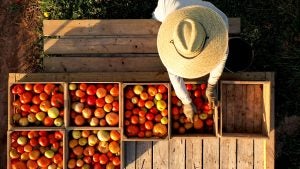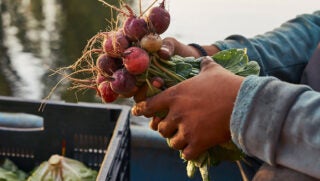The statement said no further details are being released at this time.
A vegetable farm in central Minnesota is facing a lawsuit filed by over 40 workers alleging “deplorable” work and living conditions on the farm.
According to news sources, the workers are claiming that owner John Svihel of Svihel Vegetable Farm violated the Trafficking Victims Protection Act.
In a statement, Svihel Farm said the lawsuit is “wrong on the facts and the law, full of falsehoods, falsehoods and outright lies.”
The employees — who originate from Honduras, Mexica, and the Dominican Republic — are represented by the Minneapolis law firm Chestnut Cambronne. From 2013 to 2022, they were recruited to work at Svihel Farm in Foley, Minnesota, approximately 15 miles northeast of St. Cloud. These workers hold H-2A visas for temporary foreign agricultural labor.

According to the lawsuit, the labor contracts stipulated a seven-hour weekday, four hours on Saturdays, and Sundays off, with additional hours considered overtime. However, the workers say that they often worked more than 100 hours a week, including Sundays, without receiving overtime pay. The lawsuit alleges that paychecks were consistently short by several hundred dollars.
The complaint further alleges that workers in the vegetable fields were denied water and restroom breaks and were exposed to pesticides. They also claim they were allowed to visit a local grocery store only once every 15 days instead of weekly as promised in their contracts.
Svihel Farm claims to pay H-2A workers $18.50 per hour, with overtime at $27.75 per hour, meeting or exceeding federal and state H-2A program requirements. The company asserts pride in its working conditions, benefits, and compensation.
The farm provides free communal housing, but the lawsuit describes the living conditions in Foley and Santiago, Minnesota, as substandard, with worn-out mattresses, bed bugs, limited kitchen and food storage facilities, inadequate restroom facilities, and coin-operated laundry.
Several workers accuse Svihel Farm and its owner of exploitation, verbal and psychological abuse, fear, humiliation, and physical ailments. Specific allegations include Svihel throwing a cabbage at a worker and another worker urinating on himself due to a lack of restroom breaks and clean clothes.
Two workers also reportedly claim retaliation from Svihel Farm for speaking to the U.S. Department of Labor during its previous investigation into Svihel. In 2015, Svihel, his company, and two labor brokers were indicted on conspiracy charges related to illegal fees and kickbacks from foreign workers. The Ohio broker was convicted, and Svihel and the Dominican broker pleaded guilty in 2016 to conspiracy to commit labor contract fraud.
As part of the plea agreement, Svihel agreed to pay restitution totaling nearly $770,000 and to employ a compliance supervisor until 2017.
These allegations against Svihel Farm add to a series of abuse claims by immigrant workers against Minnesota farmers.










